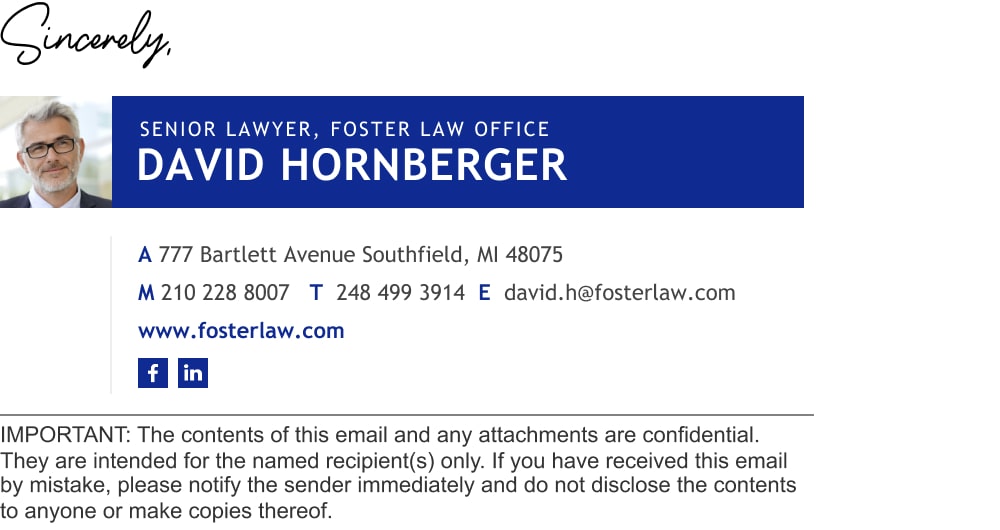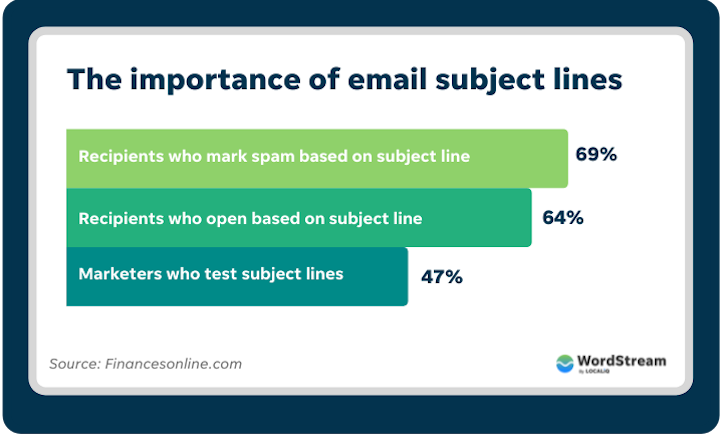7 Tips for Successfully Growing Your Small Business Through Cold Emails
Believe it or not, cold email campaigns work. Even as technology and competitive ideas drive marketing techniques into new territory daily, direct email marketing remains tried-and-true.
But it also presents challenges that can be daunting, especially if you’re in the early stages of growing your business.
You may have questions like:
- Who should I be contacting?
- How can I show that my offer is legitimate and appealing?
- These businesses receive heaps of emails everyday! How can I make mine stand out?
- What outcomes can I expect from investing in cold email marketing?
Luckily, we’re here to answer those questions and more.
In this blog post, we'll conduct a deep dive into the best practices your small business can employ to ensure your cold email outreach is effective and produces results.
Ready to learn more?
Let’s begin!
Why cold email marketing matters
In a recent survey we conducted of 274 small business marketers, 44% of respondents reported using cold emails from email addresses that were purchased or otherwise didn't opt-in to be emailed by the business.
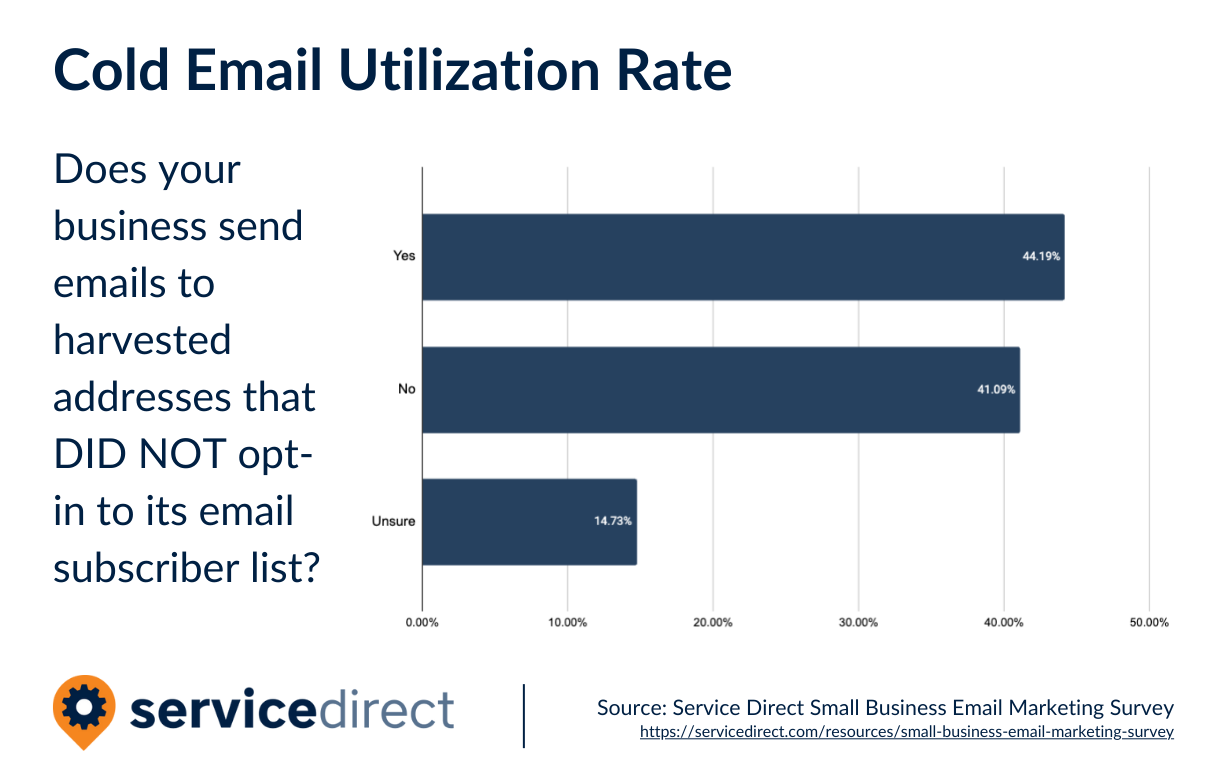
Clearly, cold email remains a prominent strategy, and yet, respondents also revealed that optimizing their email metrics was their biggest challenge. Note that finding time and resources to commit to email marking came in as the second highest concern.
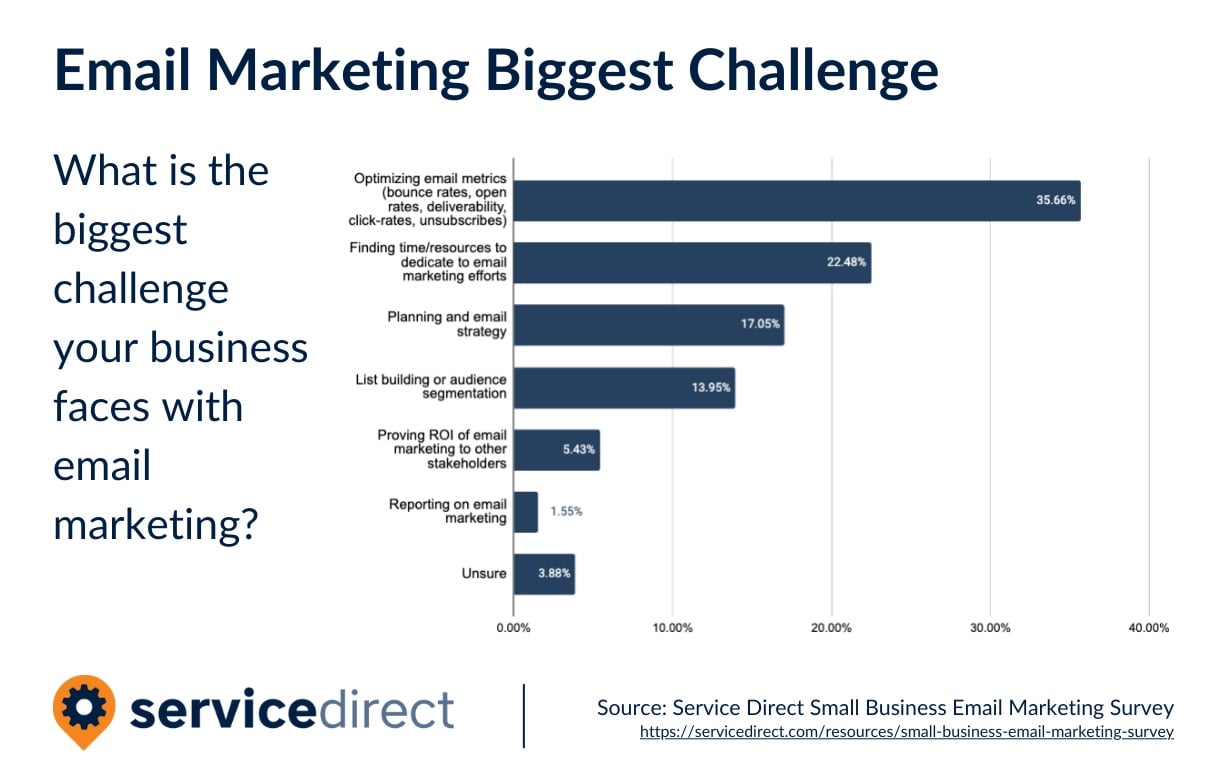
This shows that, while it’s still a popular and productive marketing strategy, finding ways to implement email marketing efficiently is key. And understanding just what to do with all of the information that your emails generate is a top concern.
The way that you design your cold email marketing campaign is crucial to its success. And you’ll need resources and a plan to put all of the data it generates to good use.
Here are some of the most important tips to keep in mind:
1. Customize your message for your audience
Choose your email recipient with care.
Nothing will annoy your audience more than an email from someone who isn't prepared to offer real value. It’s on you to prevent this by doing your research in advance.
Make sure your information speaks directly to your target customers when sending emails. For example, if you offer courier services, craft a message to your ideal clients, for instance, a printing company or law firm, detailing your ability to deliver packages of any size throughout the nation.
This makes your message immediately relevant to the reader, as opposed to vague promises of “helping your business” or “increasing revenue”.
In other words, be clear to the recipient that you’re reaching out to them for a specific reason. You don’t want your reader to mistake this for a generic email that's been blasted out to a purchased list.
It’s also important to identify the ideal recipient for your email.
For instance, if you’re a B2B business, you’ll need to find out who’s best suited to discuss what you have to offer for each business you email. Should you contact the CEO? Or does your product fall under the supervision of a marketing director or IT supervisor?
Think ahead and gather all of the information that you can in advance. Hint: LinkedIn is a useful friend, here!
2. Establish credibility
To stand out from the crowd, do whatever you can to connect with your reader personally.
Do you have mutual friends or partnerships that you can mention? Have the two of you or your organizations worked together in the past? Are you a customer of theirs or have you been before?
If so, mention this to create a human connection. This is essential to laying the groundwork for productive dialog much more effectively than an email that reads like a robotic, impersonal marketing device.
If you’re not able to highlight any personal connections, briefly mention any meaningful credits that you can. Have you or your organization received any special recognitions or awards? Do you currently serve any well-known clients?
Real-world evidence showing your effectiveness and others’ trust in you can help readers feel more receptive to what you have to say.
Ending your message with a professional email signature is also essential.
Professional email signatures let recipients know you're legit, and they can also be a good opportunity to redirect them to your website or social media.
To create a professional email signature, consider including your full name, company name, contact details, and a professional picture of yourself with a simple background.
Pictures that are low quality with cluttered elements aren't ideal for email signatures, so make sure to choose your picture wisely and remove the background from the image if needed to make it look clean and professional.
3. Highlight a pain point and offer a remedy
You have a short window of opportunity to capture your reader’s interest. Seize it by demonstrating that you already understand what they need!
Remember that no one is opening your cold email because they want to know about you. Your reader has needs and your job is to make it clear right away that you’re available to meet their needs, and make their life easier — not to add clutter to their inbox or calendar.
Think about it:
- Why did you choose to reach out to this person?
- What have you learned about them?
- What needs did you identify?
- What solutions can you offer?
Keep the answers to these questions at the center of your message.
One way to achieve this is to highlight the ways you’ll solve the recipient’s pain points in your pitch.
For instance, if you’re a career coach looking to secure more college graduates for your coaching programs, you could highlight common struggles graduates are facing and how you can help them through.
Here’s a quick example:
“Hey Sara,
I noticed on LinkedIn that you’re graduating from UNT soon — congratulations! I just wanted to pop in and let you know that I understand how stressful it can be to not know where your career path will lead you next.
That’s why I love linking up with students and sharing my Career Freedom tools. Can we sync up on a free discovery call later this week to discuss your specific needs?
Here’s my Calendly link for easy scheduling.
Looking forward to speaking with you soon!
Best,
Matthew
(Email signature here)”
Details like these are essential to making your offer feel genuine and valid rather than generic, white marketing noise.
4. Get to the point
While we’ve discussed the importance of credibility, your reader isn't interested in reading a lengthy bio or a long-winded description of your organization.
A well-thought-out email subject line is an essential way to help set the tone that you want.
Study examples of email subject lines that have been shown to produce high open rates to decide which approach would best reach your audience.
If you’re feeling stuck, AI-enabled tools, like an AI writer, are designed to help marketers craft email subjects that maximize the chances of emails reaching the inbox by increasing open rates.
Waste no time drawing your reader’s attention to the solutions that you have to offer. Avoid vague language about “benefits” and “growth” and stick to the specifics instead.
What kind of ROI can they expect? What changes will they see? Why is your message worthy of their attention?
It’s also important to make sure that you aren't asking your reader to do things that you could do yourself.
Instead of asking, "When are you available?", offer several dates and times. Then, include the option to schedule the conversation further in advance, if needed.
Make it as easy as possible for your reader to say “yes”.
5. Keep it positive
While confidence and clear value statements are key, it’s also important to remember that any attention a recipient gives to your cold email campaign is a courtesy and should be treated as such.
Readers will be quick to discard messages that oversell, condescend, or seem overly pushy.
So, keep your email tone light, good-natured, and positive. These are the feelings that you want your recipient to associate with your product or service, so, they must come through in the way you communicate.
After all, if you have something truly worthwhile to offer, there’s no need to sound desperate.
Avoid urgent demands for responses and don’t underestimate the impact of a simple closing like, “Thank you so much for your time.”
6. Be ready to respond
Remember that the goal of a cold email campaign is to develop prospects — and not necessarily to close deals right away.
So, while a positive or curious response from a recipient may feel like a huge victory, it’s really just a starting point.
Be prepared to answer questions and offer actionable steps to anyone who expresses interest.
And remember that interest may not always be expressed in an email reply — and that’s okay.
The prospect could need a bit more nurturing, they may not be a good fit for you at this time, or they’re simply not interested.
7. Use data to improve your cold email campaigns
No plan for a cold email campaign is complete without a way to extract, load, and transform the data that it generates. This is also called an ELT process.
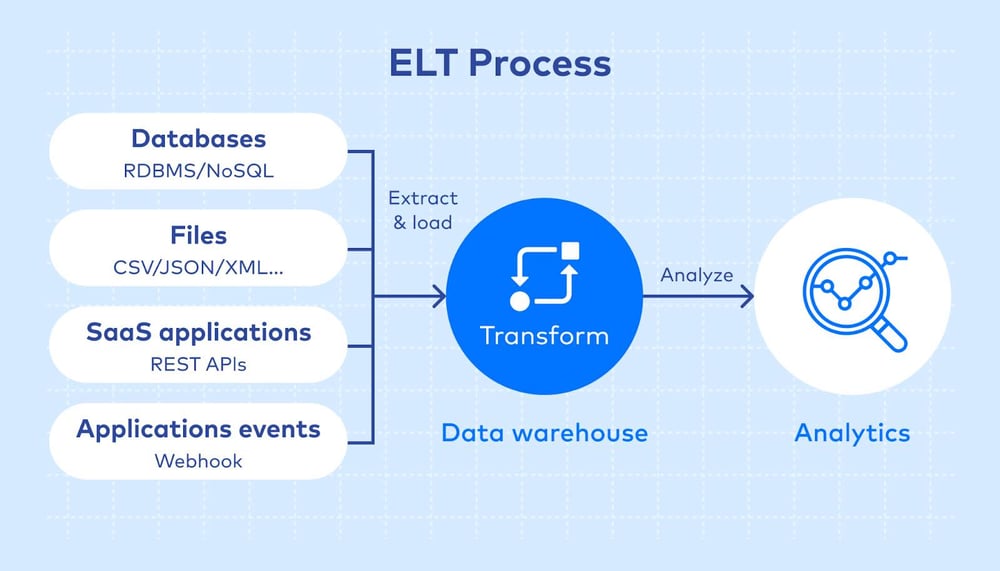
This data might include open rates, click-through rates, site traffic, and other important metrics that give valuable insight into how well your cold emails are leading to engagement with your brand.
The ELT process aims to convert raw data into data sets of different formats that analysts can use to derive valuable insights.
For example, unstructured data from an email marketing campaign can be converted into definite metrics that help analysts understand whether the campaign is on track and contributes to larger organizational goals.
Use this invaluable information to tweak and course-correct your cold email campaigns as needed!
Wrapping up
Opportunity is out there waiting for you, friend.
The only way to help your business grow is to spread the word about what you have to offer — and cold email marketing continues to be an important part of that process.
You’ll need respectful, positive messaging, a deep understanding of the client’s needs, and a plan for using the data you receive to grow your business.
Use these tips to create or refine a cold email marketing campaign that helps your business make stronger connections with your clients.
Begin making progress toward your goals today!


